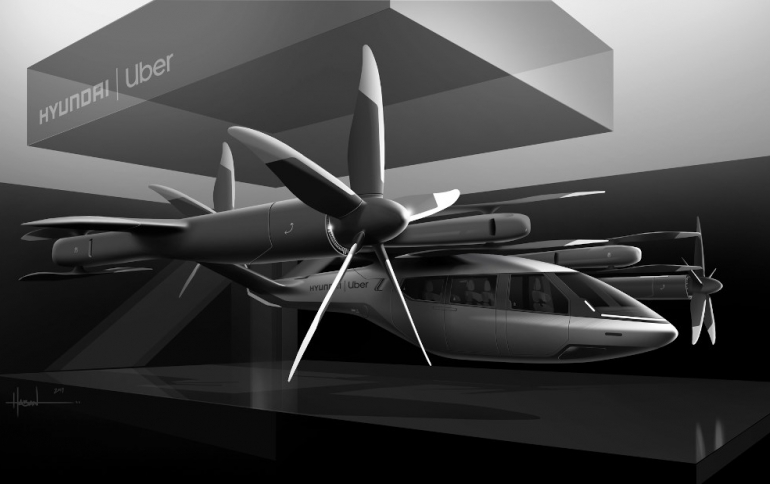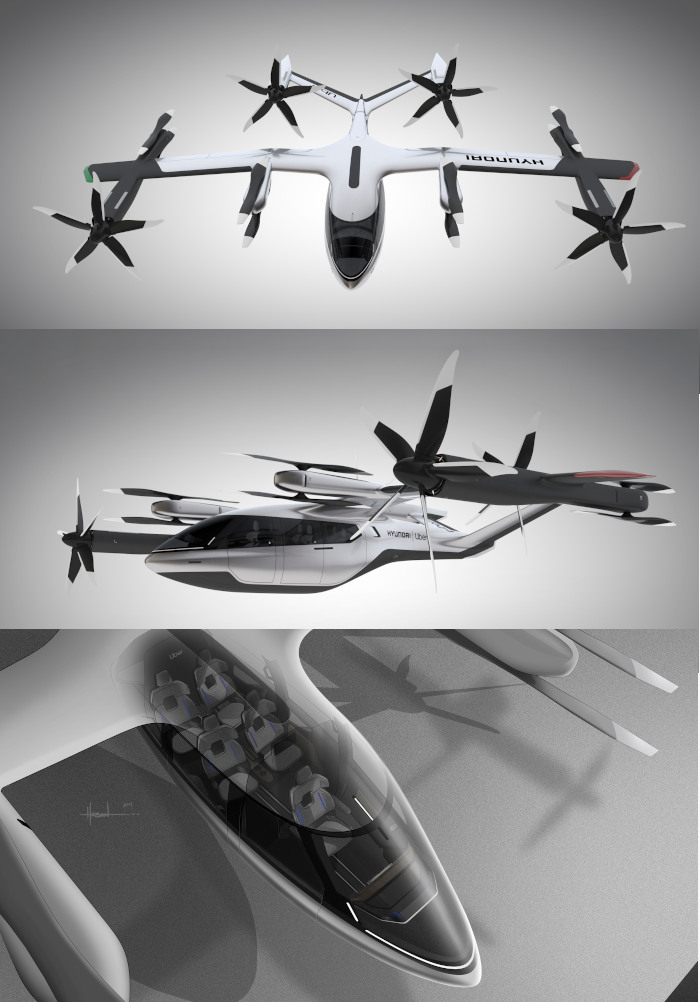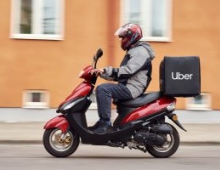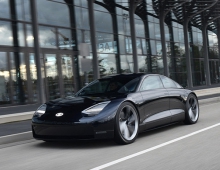
Hyundai Motor and Uber Announce Aerial Ridesharing Partnership, Release New Air Taxi Model
Hyundai Motor Company and Uber have today announced a new partnership to develop Uber Air Taxis for a future aerial ride share network and unveiled a new full-scale aircraft concept at the Consumer Electronics Show (CES).
Hyundai is the first automotive company to join the Uber Elevate initiative. The air vehicle concept Hyundai released today was created in part through Uber's open design process, a NASA-inspired approach that jump-starts innovation by publicly releasing vehicle design concepts so any company can use them to innovate their air taxi models and engineering technologies.
In this partnership, Hyundai will produce and deploy the air vehicles, and Uber will provide airspace support services, connections to ground transportation, and customer interfaces through an aerial ride share network. Both parties are collaborating on infrastructure concepts to support take-off and landing for this new class of vehicles.
Uber has pledged to begin demonstrator urban flights in 2020 and commercial operations in 2023 as part of its project, which also counts Boeing subsidiary Aurora Flight Sciences as one of its partner firms.
"Our vision of Urban Air Mobility will transform the concept of urban transportation," said Jaiwon Shin, Executive Vice President and Head of Hyundai's Urban Air Mobility (UAM) Division. "We expect UAM to vitalize urban communities and provide more quality time to people. We are confident that Uber Elevate is the right partner to make this innovative product readily available to as many customers as possible."

Hyundai has worked with Uber Elevate to develop a PAV (Personal Air Vehicle) model, S-A1 that utilizes innovative design processes to optimize electric vertical take-off and landing (eVTOL) aircraft for aerial ridesharing purposes. The Elevate initiative based this process on NASA's approach of putting design concepts out publicly to inspire innovation amongst multiple companies, spurring the development of common research models to investigate novel aerodynamic concepts and catalyzing industry progress in wing design, noise, aerodynamics, and simulation verification.
Hyundai's S-A1 model unveiled at CES reflects previous eVTOL designs Uber Elevate has released in the following ways:
- It is designed for a cruising speed up to 180 miles/hr (290 km/hr), a cruising altitude of around 1,000-2,000 feet (300 - 600 mt) above ground, and to fly trips up to 60 mile (100 km).
- The Hyundai vehicle will be 100% electric, utilizing distributed electric propulsion and during peak hours will require about five to seven minutes for recharging.
- Hyundai's electric aircraft utilizes distributed electric propulsion, powering multiple rotors and propellers around the airframe to increase safety by decreasing any single point of failure. Having several, smaller rotors also reduces noise relative to large rotor helicopters with combustion engines, which is very important to cities.
- The model is designed to take off vertically, transition to wing-borne lift in cruise, and then transition back to vertical flight to land.
- The Hyundai vehicle will be piloted initially, but over time they will become autonomous.
- The cabin is designed with four passenger seats, allowing riders to board / disembark easily and avoid the dreaded middle seat with enough space for a personal bag or backpack / rider.
Hyundai's exploration of future urban transportation incorporates the electric PAV concept with a new ground transportation, the Purpose Built Vehicle (PBV) concept. Hyundai's vision for creating communities from future transit systems comes into focus with yet another new infrastructure concept, called the Hub. When many PBVs and PAVs are docked and connected to a Hub, they make a new public space where diverse groups of people can come together.
Boeing Co said in October it was working with Volkswagen’s sports car brand, Porsche, to develop a concept electric flying vehicle capable of transporting people in urban areas.





















